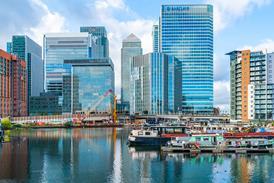The seeds have been sown for London’s biodiversity revolution, but it will be small clusters of ingenuity rather than grand master plans that drive it.

Pocket parks in the capital first emerged from the ashes of the Blitz. As the London of the modern era emerged post-1945, patches of land adjacent to damaged buildings were converted into pocket parks.
We are fortunate that today London is a relatively green city, with around 3,000 parks of varying sizes covering 18% of the capital. While big may be beautiful, there are deserts of green spaces between the large parks, rivers and canals. In a city short on space, we can’t create new acres of parkland, but we can weave biodiversity and nature into the fabric of our neighbourhoods through parklets, green roofs and micro-gardens.
Numerous studies have shown that small parks and green spaces punch above their weight in terms of impact. The University of Pennsylvania found pocket parks improve perceptions of public safety, while another US study showed that they are less likely to lead to environmental gentrification.
As well as protecting against mood disorders, depression and stress, proximity to green infrastructure, while supporting psychological restoration also has a major impact on physical health.
NASA research found that in Denmark, exposure to green space in childhood is equivalent to family history and parentage when predicting mental health outcomes.
As well as protecting against mood disorders, depression and stress, proximity to green infrastructure, while supporting psychological restoration also has a major impact on physical health. Londoners from deprived areas are twice as likely to die from lung disease as those from affluent areas. In the UK, physical inactivity directly contributes to one in six deaths.
Moreover, green infrastructure has a number of environmental benefits on air quality, carbon emissions, the urban heat island effect and climate resilience.
At Cadogan, we’re building on our garden square heritage by introducing a forest into one of the most densely populated areas of London. Between the bustling King’s Road and River Thames, in partnership with SUGi, Louis Vuitton and Moët & Chandon, we’ve planted the Serenity Forest, which sees 2,580 sq ft of previously concreted land planted with 780 trees and shrubs, becoming self-sustaining in three years.
Many cities are investing and prioritising green infrastructure. In Paris, the Champs Élysées – an avenue that is known around the world for its beauty, shopping and traffic – is undergoing a radical €250m (£220m) makeover and being converted into an extraordinary garden. Car access will be halved and replaced by a tunnel of trees, improving air quality and opening space for pedestrians.
Schemes such as these are exciting and should rightly be commended for their ambition, but enabling community connection with nature can happen at small, hyper-local levels – and might just be more impactful.
Kate Neale is head of sustainability at Cadogan





























No comments yet